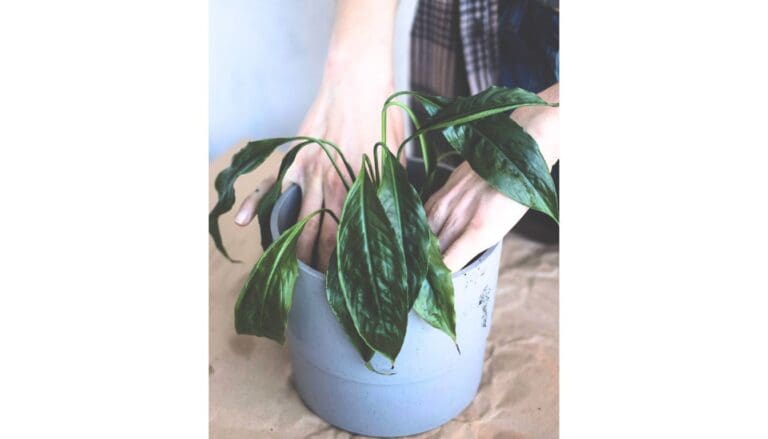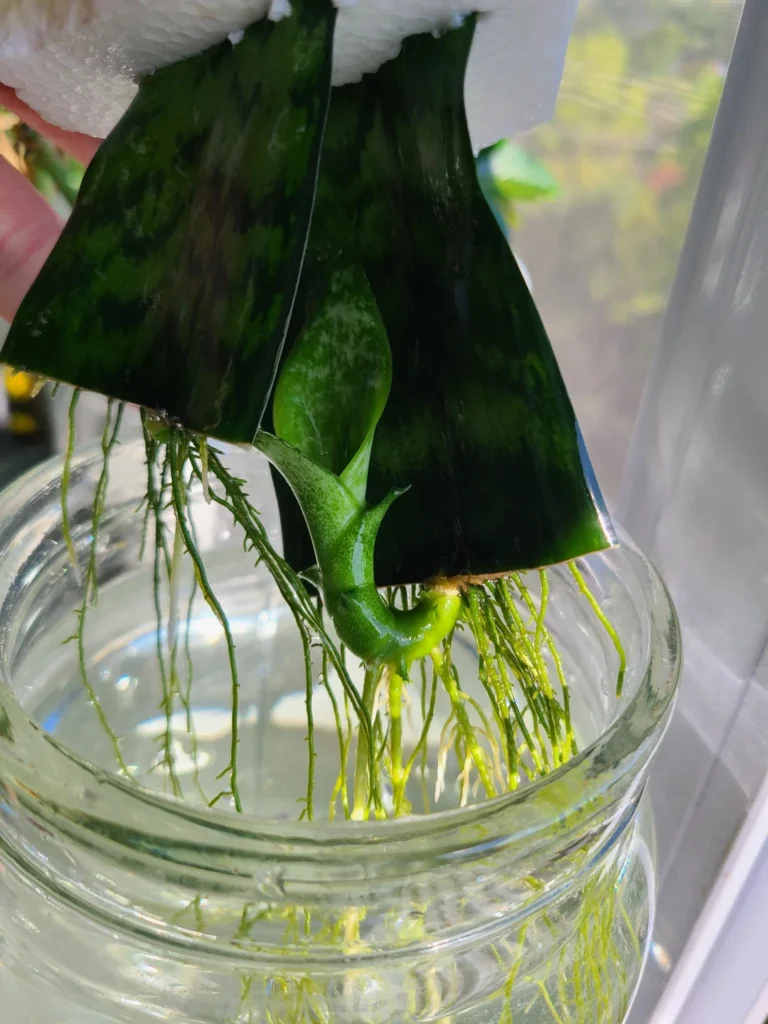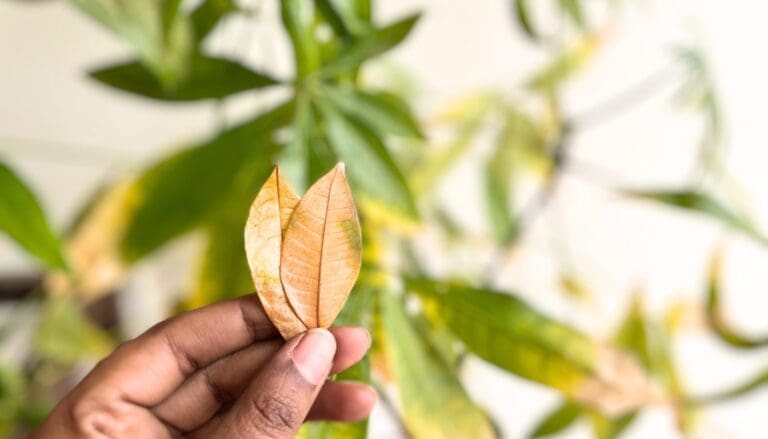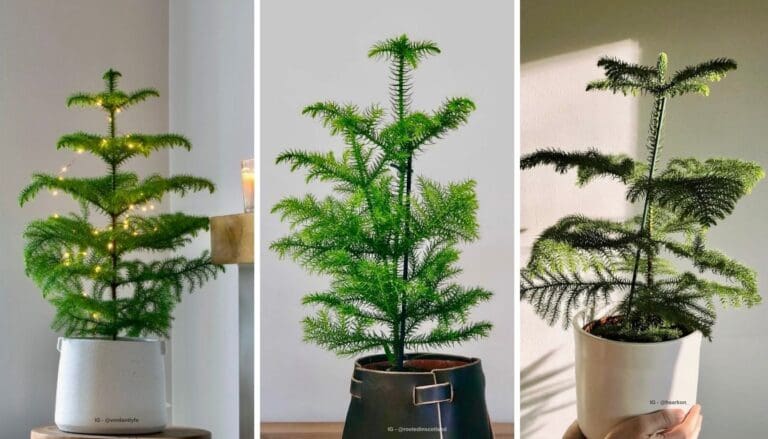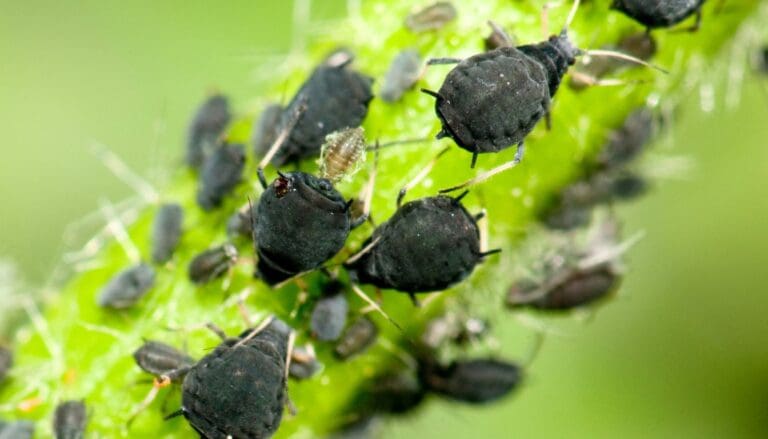What Does Bright Indirect Light Mean For A Plant? (With Examples)
Plants can’t live without light. If you are a plant owner already, you might have experienced your plants face health issues when there’s a lack of light. But, if you are a beginner, you might not understand what bright indirect light means for a plant. Let’s understand.
Bright, indirect light is when your plants don’t get the sun’s direct rays which means the light hits another surface before reaching your plant. Bright indirect light measures 10,000–20,000 lux, depending on the daylight and weather conditions.
Understanding bright indirect light is crucial because it gives you a clear idea about what light you should provide your houseplants. In this article, we will understand bright indirect light in depth. So, keep reading.

Please note: Simplify Plants is reader-supported. Some links in the post are affiliate links and I get a commission from purchases made through links in the post.
What counts as indirect light for plants?
If you are a beginner who wants to get a new plant or has got one and goes on to research, you will come across this term: bright indirect light.
Indirect light is the light that comes from the sun but doesn’t hit the plant directly.
It usually hits a surface before bouncing to the plants.
If the sunlight hits the plant directly, it would be direct sunlight.
We will discuss this later but let’s understand why plants need bright indirect light in the first place.
Why do plants need bright indirect sunlight?
There are a lot of misconceptions about the light requirements of plants.
Many believe that all plants thrive in direct sunlight, but that is not true.
When you start researching, you realize there are many terms around light like direct light, indirect light, low light, etc.
Before I explain each, I would like to explain why some plants prefer bright indirect sunlight over a direct or low light.
Many tropical plants you keep in your house as houseplants come from rainforest regions where they grow under canopies.
Now, these plants never get exposed to direct sunlight.
That is because the foliage of the big trees shades them from the direct sun, and they only receive indirect light.
So, these plants are accustomed to bright or medium indirect light in their natural habitat and prefer the same as houseplants.
You should neither place these under direct sunlight nor in dark corners of the house.
These plants are ideal for spots in the room that get indirect sunlight.
Different light categories
Understanding different light categories will help you better understand bright indirect light.
- Direct light: This is the easiest to understand. Direct sunlight is when the sun’s rays fall on the plants without obstruction. Example: Plants placed outdoors or on the window sill get direct sunlight. The term full sun also implies direct light.
- Indirect light: Indirect light can have different intensities like bright, medium, and low. But, it means when the sun’s rays hit a surface before falling on your plants.
- A mix of both: Many plants enjoy a mix of direct and indirect light. And many spots in your house will provide such a condition. This can be direct sunlight during the morning, which is mild and indirect light for the rest of the day.
How do I measure bright indirect light for plants?
If you want to measure bright indirect sunlight to ensure your plants are getting it, here are a few ways:
1. Use a light meter
A light meter is a device that tells you the intensity of light using foot candles.
A foot-candle is a unit that measures light like lux, and the bright indirect light can measure anything between 800-2000 foot candles based on the plant’s placement.
However, the measurement depends on various factors like direction, time of the day, and whether the plant is placed indoors or outdoors.
Some light meters also measure with the lux unit.
The good thing is you can get a light meter without getting it from the market.
You can install one on your phone and start using it.
2. Check the shadow
The easiest way to check whether your houseplant is getting bright indirect light, especially if you are a beginner, is by using the shadow technique.
Bring your hand between the light and the plant and check the shadow.
If your plant gets direct light, you will see a sharp, distinct, and clear shadow.
And if your plant gets indirect light, you will notice a more soft shadow with blurry edges.
You can check the shadow of the plant also without using your hand.
3. Use a PAR (Photosynthetically Active Radiation) meter
These are more expensive than the usual foot candle light meters but give a more accurate reading.
While a foot candle light meter gives a more human-perceived brightness measurement, a PAR meter counts the photons and is designed to measure plant light.
This device measures in moles per second.
You can easily convert lux to foot candles and vice versa, but it isn’t easy to convert the units of a PAR meter into these.
You can consider these:
- If you find a reading of 4000, it indicates there’s sunlight around your plant.
- Around 500 units indicate bright light.
PAR devices have censors that you need to place near your plant and adjust based on the light coming to the plant.
Bright indirect light example

The light source in the house is the windows, and you have to use them to create bright indirect light for your plants.
Some examples of spots with bright indirect light might be:
- A window with curtains
- A window that is shaded with tree branches or a shade
- A spot which is 5-10 feet away from the window
- A balcony or patio that receives light after it hits the surrounding trees or buildings, etc.
The intensity of the light your plant receives depends on various factors, such as:
- The direction of the window
- Season
- Distance between the light and the plant
- Clouds in the sky
- Obstruction between the light and the plant
Which direction will give bright indirect light to my plant?

Let’s understand the different directions so you know where to place your plant for bright indirect light.
- An east-facing window: These windows are ideal for plants that prefer bright indirect light. You can place your plant on or near the windowsill. This direction gets direct sunlight in the morning, but since it is mild, plants don’t face any problems with it. And for the rest of the day, this direction receives indirect light.
- A west-facing window: This direction receives hot sunlight later in the day, which is not ideal for plants that require bright indirect light. So, the plant will need protection. Place it 5-10 feet away from the window or shield the plant with a curtain.
- A north-facing window: These usually don’t get direct sunlight, so you can place your plant on the window sill. However, this direction might not be suitable as the plant might not get enough light. You can use artificial lights in this case.
- A south-facing window: South-facing windows receive direct harsh sunlight that can harm the plants that need bright indirect light. I suggest placing your plant at least 5 feet away from the window if it gets unobstructed light. But, if a shade or barrier comes between the light and the window, you can bring the plant closer to the window.
Other factors like season can also affect the light your plant receives.
During winter, the duration and intensity of the sunlight reduce.
So, the plants don’t get as much light as in summer or spring.
If you have placed your plant near a south-facing window in winter, it might receive more light than the other directions.
Is my plant receiving enough bright indirect light?

One common confusion I have come across, especially in beginner plant parents, is that they are not sure if their plant is receiving enough bright indirect light.
You can use a light meter to check how much light your plant is getting.
But if it does not get enough light, you will see certain signs on the plant:
- Slow growth
- Droopy leaves
- Pale leaves
- Leggy plant
- Weak plant
If you notice any of these signs, you can shift the plant to a brighter spot that gets more bright indirect light.
Or use artificial lights to make up for the lack of light.
Is my plant receiving direct light?
If you have gone through all the things I have discussed above, you will understand if your plant is getting direct light.
If your plant is placed in an area with unobstructed sun rays, it is getting direct light.
Besides, a plant that gets too much or direct light will also show signs, like:
- Yellow leaves
- Brown edges and spots on leaves
- Crispy leaves
- Dry and compact soil
- Dehydrated weak plant
If you face this problem, move the plant away from the window and place it 5-10 feet away.
You can also use blinds or curtains to filter the direct light.
How to create bright indirect light?
If you want to create a space for your plants that need bright indirect light, try the following:
1. Use artificial light
If your house gets low light or you don’t have a spot that gets bright indirect sunlight, you can bring home an artificial light.
These are easily available online or in the market.
Many artificial lights are specially designed for plants and are called grow lights.
2. Use mirrors
Adding mirrors can help your plants get more indirect light.
If the windows don’t provide enough light to your plants, you can install mirrors facing the window or around the window.
3. Paint the walls white
If your house doesn’t get enough light, you can consider painting the walls white.
White bounces more light which is very helpful for plants.
Plants that need bright indirect light

Here are some popular houseplants that prefer bright indirect light:
- Calathea
- English ivy
- Monstera
- Sago palm
- Dieffenbachia
- Schefflera
- Peperomia
- Alocasia
- Prayer plant
- Rubber plant
How many LUX is bright indirect light?
If you are using a light meter on your phone or purchased one to measure the light around your plant, you might want to know how many LUX is bright indirect light.
Bright indirect light measures around 10,000 to 20,000 LUX.
If you convert it to foot candles, it comes to around 1000-2000.
Sources: University of Minnesota, David H. Trinklein, Horticulture State Specialist, The University of Georgia, The Royal Horticultural Society.
Recommended Garden Supplies
| Product Image | Our Recommended Gardening Supplies | Check Offers! |
|---|---|---|
Top Top
Top
Top
Top
Top
Top
Top
Top | rePotme Houseplant and Tropical Classic Potting Soil Mix | Check Offer On Amazon |
 Top
Top
Top
Top
Top
Top
Top
Top | Espoma Organic Indoor Plant Food | Check Offer On Amazon |
 Top
Top
Top
Top
Top
Top
Top
Top | GooingTop LED Grow Light 6000K Full Spectrum Clip Plant Growing Lamp | Check Offer On Amazon |
 Top
Top
Top
Top
Top
Top
Top
Top | Soil Moisture Meter | Check Offer On Amazon |
 Top
Top
Top
Top
Top
Top
Top
Top | Govee Hygrometer Thermometer, Bluetooth Enabled! | Check Offer On Amazon |
 Top
Top | LEVOIT Humidifiers for Large Room(Best For Plants) | Check Offer On Amazon |
 Top
Top
Top
Top
Top
Top
Top
Top | Upgraded DIY Automatic Drip Irrigation Kit, 15 Potted Houseplants Support | Check Offer On Amazon |
 Top
Top
Top
Top
Top
Top
Top
Top | Stainless Steel Heavy Duty Gardening Tool Set | Check Offer On Amazon |
 Top
Top
Top
Top
Top
Top
Top
Top | Bonide Insecticidal Soap | Check Offer On Amazon |
 Top
Top
Top
Top
Top
Top
Top
Top | Bonide 32 oz Spray Neem Oil for Organic Gardening | Check Offer On Amazon |
 Top
Top
Top
Top
Top
Top
Top
Top | Garden Safe Fungicide | Check Offer On Amazon |




